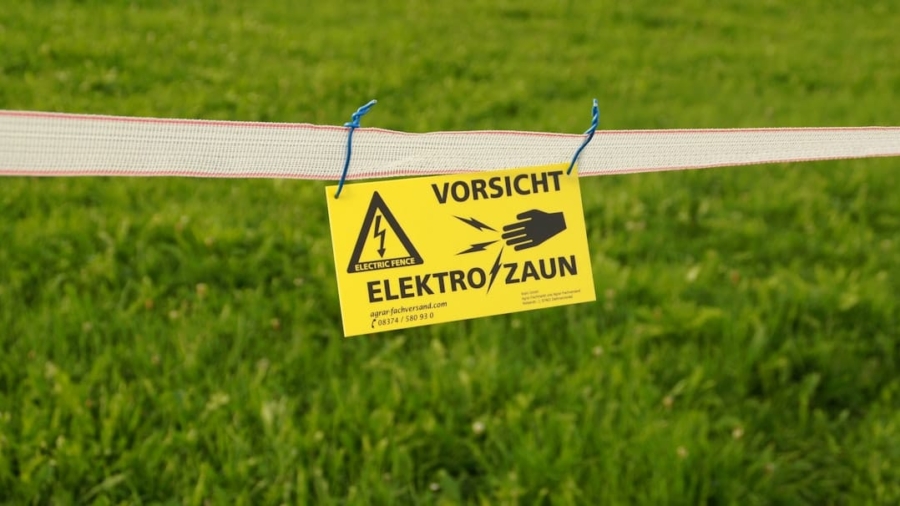The concept of smart homes has evolved significantly over the past decade, driven by advancements in technology and a growing awareness of environmental issues. Smart homes integrate various devices and systems that communicate with each other, allowing homeowners to control and monitor their living environments remotely. This interconnectedness not only enhances convenience and comfort but also plays a crucial role in promoting sustainability.
As the world grapples with climate change and resource depletion, the need for sustainable living practices has never been more pressing. Smart homes offer innovative solutions that can help reduce energy consumption, conserve water, and minimize waste, thereby contributing to a more sustainable future. Sustainability in smart homes is not merely about using energy-efficient appliances or installing solar panels; it encompasses a holistic approach to resource management.
By leveraging technology, homeowners can make informed decisions that positively impact their environment. For instance, smart thermostats can learn user behavior and optimize heating and cooling systems, while smart irrigation systems can adjust watering schedules based on weather forecasts. These technologies not only enhance the quality of life but also align with global sustainability goals, making smart homes a pivotal element in the transition towards greener living.
Key Takeaways
- Smart homes play a crucial role in promoting sustainability by integrating technology to reduce energy consumption and waste.
- Data analytics is essential in smart home sustainability, as it enables the collection and analysis of data to optimize energy usage and resource management.
- Energy management and efficiency in smart homes involve the use of smart devices and systems to monitor and control energy usage, leading to reduced environmental impact.
- Water conservation and management in smart homes can be achieved through the use of smart irrigation systems, leak detection technology, and water-efficient appliances.
- Waste reduction and recycling in smart homes can be facilitated through the use of smart waste management systems and the adoption of sustainable practices.
The Role of Data Analytics in Smart Home Sustainability
Data analytics serves as the backbone of smart home technology, enabling homeowners to harness vast amounts of information to make informed decisions about their energy use and resource management. By collecting data from various sensors and devices, homeowners can gain insights into their consumption patterns, identify inefficiencies, and implement strategies for improvement. For example, smart meters provide real-time data on electricity usage, allowing users to track their consumption and adjust their habits accordingly.
This data-driven approach empowers individuals to take control of their environmental impact. Moreover, data analytics can facilitate predictive modeling, which anticipates future energy needs based on historical usage patterns. This capability is particularly beneficial for optimizing energy consumption during peak hours when demand is highest.
By analyzing trends and patterns, smart home systems can automatically adjust settings to reduce energy use during these times, leading to significant cost savings and a lower carbon footprint. The integration of machine learning algorithms further enhances this process by continuously improving the accuracy of predictions based on new data inputs.
Energy Management and Efficiency in Smart Homes

Energy management is a cornerstone of sustainability in smart homes. With the integration of smart devices such as thermostats, lighting systems, and appliances, homeowners can achieve unprecedented levels of energy efficiency. Smart thermostats, for instance, can learn user preferences and adjust heating and cooling schedules accordingly.
By optimizing temperature settings based on occupancy patterns, these devices can significantly reduce energy consumption without sacrificing comfort. A study by the American Council for an Energy-Efficient Economy found that homes equipped with smart thermostats can save an average of 10-12% on heating and cooling costs annually. In addition to thermostats, smart lighting systems equipped with motion sensors can further enhance energy efficiency.
These systems automatically turn off lights in unoccupied rooms or adjust brightness levels based on natural light availability. This not only conserves energy but also extends the lifespan of light bulbs, reducing waste. Furthermore, integrating renewable energy sources such as solar panels into smart home systems allows homeowners to generate their own electricity, further decreasing reliance on fossil fuels and contributing to a more sustainable energy landscape.
Water Conservation and Management in Smart Homes
Water conservation is another critical aspect of sustainability that smart homes address effectively.
These systems ensure that plants receive the right amount of water at the right time, significantly reducing water consumption.
According to the EPA, smart irrigation technology can reduce outdoor water use by up to 50%, making it an essential tool for sustainable landscaping. Moreover, smart home technology can monitor indoor water usage through leak detection sensors and flow meters. These devices alert homeowners to leaks or unusual water consumption patterns, enabling prompt action to prevent water waste.
For instance, if a washing machine is using more water than usual, the system can notify the homeowner to investigate potential issues. By providing real-time insights into water usage, smart home systems empower individuals to make conscious decisions about their water consumption, ultimately leading to more sustainable practices.
Waste Reduction and Recycling in Smart Homes
Waste reduction is a vital component of sustainability that smart homes can effectively address through innovative technologies. Smart waste management systems utilize sensors to monitor waste levels in bins and optimize collection schedules based on actual needs rather than fixed routes. This approach minimizes unnecessary trips by waste collection vehicles, reducing fuel consumption and greenhouse gas emissions associated with waste transport.
Additionally, some smart bins are equipped with features that sort recyclables from general waste automatically, promoting better recycling practices among households. Furthermore, smart home technology can facilitate composting efforts by providing users with information on how to compost effectively. For example, smart compost bins can monitor temperature and moisture levels to ensure optimal conditions for decomposition.
By encouraging composting as a viable waste management strategy, smart homes contribute to reducing landfill waste and promoting nutrient recycling back into the ecosystem.
Indoor Air Quality Monitoring and Improvement in Smart Homes

Indoor air quality (IAQ) is a critical aspect of health and well-being that is often overlooked in discussions about sustainability. Poor IAQ can lead to various health issues, including respiratory problems and allergies. Smart homes address this concern through advanced air quality monitoring systems that measure pollutants such as volatile organic compounds (VOCs), particulate matter (PM), and carbon dioxide (CO2) levels.
By providing real-time data on indoor air quality, these systems empower homeowners to take proactive measures to improve their living environments. For instance, if elevated CO2 levels are detected due to inadequate ventilation, the system can automatically adjust HVAC settings or notify homeowners to open windows for fresh air circulation. Additionally, some smart air purifiers are equipped with sensors that detect air quality changes and adjust filtration settings accordingly.
This not only enhances indoor air quality but also promotes energy efficiency by ensuring that HVAC systems operate optimally based on real-time conditions.
Sustainable Materials and Resource Management in Smart Homes
The choice of materials used in constructing or renovating smart homes plays a significant role in promoting sustainability. Homeowners increasingly seek eco-friendly materials that minimize environmental impact while providing durability and aesthetic appeal. For example, bamboo flooring is a popular choice due to its rapid growth rate and renewability compared to traditional hardwoods.
Similarly, recycled materials such as reclaimed wood or recycled glass countertops contribute to resource conservation by reducing the demand for new raw materials. Smart home technology can also assist in resource management by providing insights into the lifecycle impacts of various materials used within the home. For instance, apps that track the environmental footprint of household items can help homeowners make informed decisions about purchasing sustainable products.
By prioritizing materials with lower environmental impacts and longer lifespans, homeowners can significantly reduce their ecological footprint while enhancing the overall sustainability of their living spaces.
The Future of Sustainable Smart Homes with Data Analytics
As we look toward the future of sustainable living, the integration of data analytics within smart home technology will continue to play a pivotal role in shaping environmentally responsible practices. The ability to collect, analyze, and act upon data will empower homeowners to make informed decisions that align with their sustainability goals. With ongoing advancements in artificial intelligence and machine learning, smart home systems will become increasingly sophisticated in predicting user needs and optimizing resource use.
The convergence of technology and sustainability presents an exciting opportunity for individuals to contribute meaningfully to environmental stewardship while enjoying enhanced comfort and convenience in their homes. As awareness of climate change grows and the demand for sustainable solutions increases, smart homes will undoubtedly become a cornerstone of modern living—transforming how we interact with our environment for generations to come.
In a related article, Unlock the Possibilities with Galaxy Book2 Pro 360, explores the innovative features of the latest Samsung laptop that is revolutionizing the way we work and play. Just like how smart homes are becoming more sustainable through data analytics, the Galaxy Book2 Pro 360 is pushing the boundaries of technology to create a more efficient and eco-friendly future.
FAQs
What is data analytics in the context of smart homes and sustainability?
Data analytics in the context of smart homes and sustainability refers to the use of advanced technology to collect, analyze, and interpret data from various sources within a smart home environment. This data is then used to optimize energy usage, reduce waste, and improve overall sustainability.
How can data analytics help make smart homes more sustainable?
Data analytics can help make smart homes more sustainable by providing insights into energy consumption patterns, identifying areas for improvement, and enabling the automation of energy-saving measures. By analyzing data from smart devices and sensors, homeowners can make informed decisions to reduce their environmental impact.
What are some examples of how data analytics can improve sustainability in smart homes?
Some examples of how data analytics can improve sustainability in smart homes include identifying energy-efficient appliances, optimizing heating and cooling systems, and monitoring water usage. Additionally, data analytics can help homeowners track their carbon footprint and make adjustments to reduce their overall environmental impact.
What are the potential benefits of using data analytics to make smart homes more sustainable?
The potential benefits of using data analytics to make smart homes more sustainable include reduced energy costs, lower environmental impact, and improved overall efficiency. By leveraging data analytics, homeowners can make informed decisions that lead to a more sustainable and environmentally friendly lifestyle.
What are some challenges associated with using data analytics for sustainability in smart homes?
Some challenges associated with using data analytics for sustainability in smart homes include data privacy concerns, interoperability issues between different smart devices, and the need for technical expertise to interpret and act on the data. Additionally, there may be initial costs associated with implementing data analytics solutions in smart home environments.

